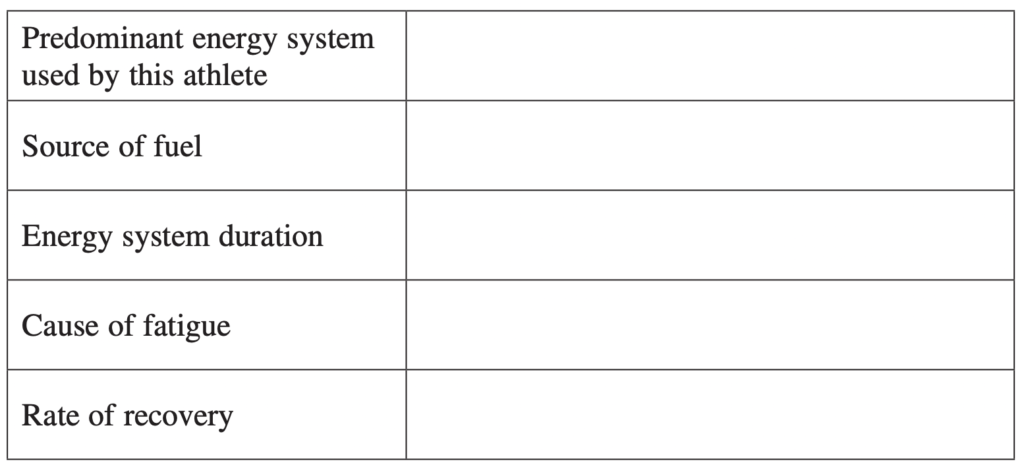Energy systems provide the energy required by muscles for movement. The body requires energy to be in the form of Adenosine Tri-Phosphate (ATP) in order to convert it from chemical energy to mechanical (movement) energy. There are three (3) main energy systems: the alactacid OR ATP/PC system, the lactic acid system, and the aerobic system.
It is important to remember that the energy systems are not used in isolation from each other, but in fact, are all used at the same time to produce ATP, but at particular times within sports, a particular system will be dominant. An example of this is in soccer throughout the game the aerobic energy system is dominant, particularly during times of lower intensity, such as when a ball goes out and everyone is jogging into position. But at other times the lactic acid system will become dominant, such as when a full back sprints forward in an attack and then needs to sprint back to defend. There will also be times when the alactacid system is dominant, such as jumping to complete a header or a short sharp sprint to beat a player to the ball.
Students learn about:
Students learn to:
- Analyse each energy system by exploring:
- source of fuel
- efficiency of ATP production
- duration that the system can operate
- cause of fatigue
- by-products of energy production
- process and rate of recovery
Past HSC PDHPE exam questions (2012-2022)
2014 Question 27
Compare the two anaerobic energy systems. 5 Marks
2017 Question 25.
Compare TWO different energy systems by exploring their duration, sources of fuel and causes of fatigue. Use examples to support your answer. 7 Marks
2020 Question
An athlete ran in the 100-metre final at an Olympic Games.
(a) In the table below, identify the predominant energy system used by the athlete, and the features of that energy system. 3 marks

